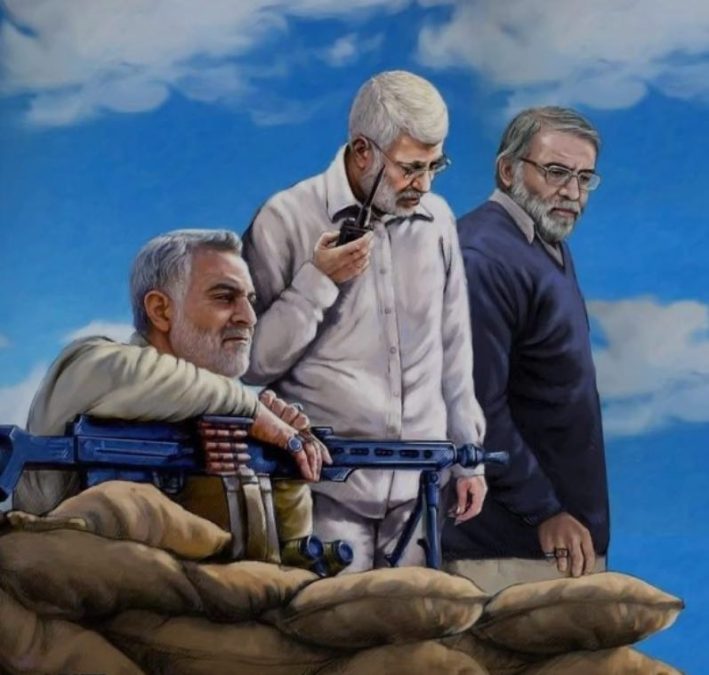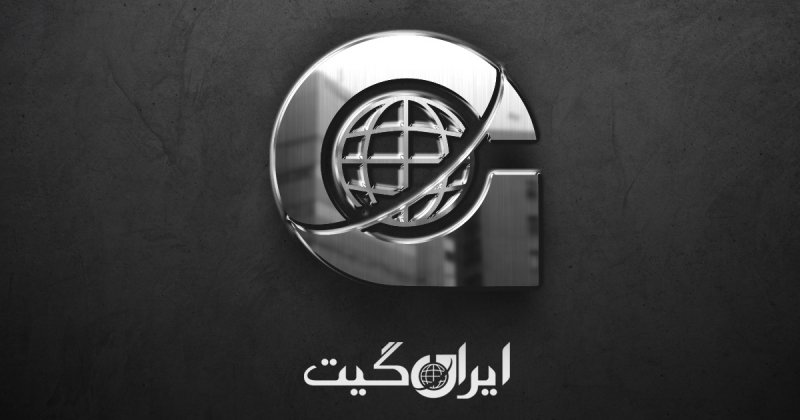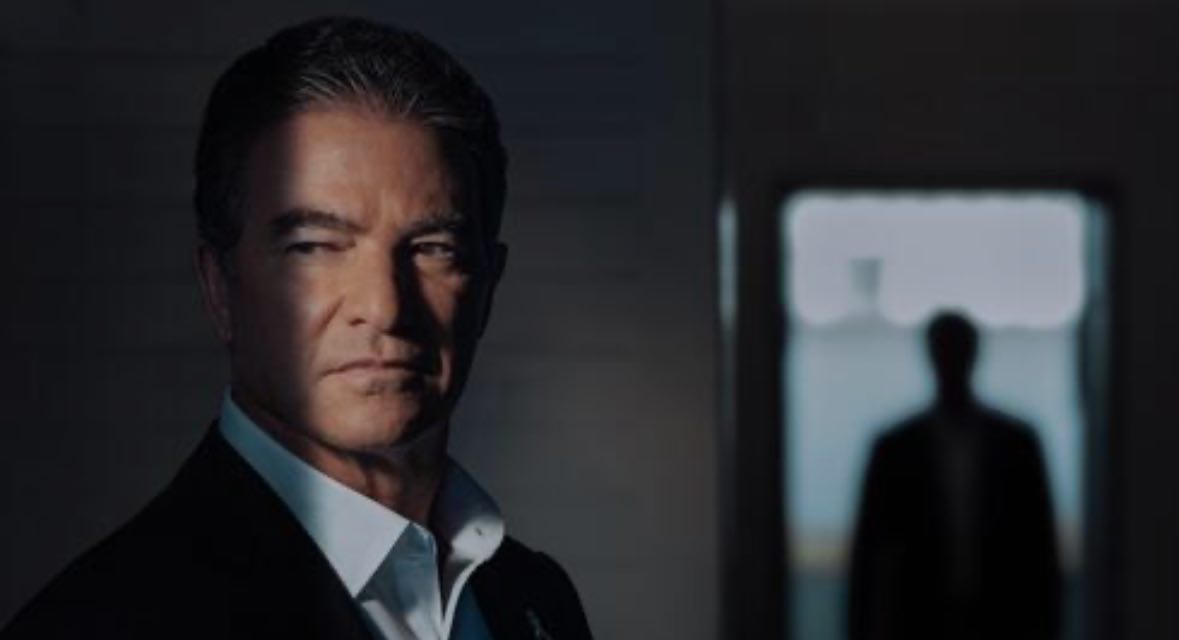Yossi Cohen from the Shadows of Mossad to the Political Scene
Yossi Cohen from the Shadows of Mossad to the Political Scene
According to Irangate News Agency, the latest book by Yossi Cohen, the former head of Mossad, titled The Sword of Freedom, unveils three and a half decades of his intelligence activities in one of the world’s most secretive security agencies. A significant portion of the book is dedicated to Iran, covering everything from infiltrating sources within the Islamic Republic’s regime to unprecedented details of the theft of the Shourabad nuclear archive and the secret operation that led to the assassination of Mohsen Fakhrizadeh, a senior Iranian nuclear scientist.
In a detailed report on the service and operations of Yossi Cohen, the former head of Mossad, his latest book, titled in English as The Sword of Freedom and in Hebrew as Wage War with Cunning, recounts a summary of his 35 years in the Israeli intelligence agency. A substantial part of it is dedicated to Mossad’s efforts against the Islamic Republic of Iran, from recruiting sources inside Iran to the theft of the Shourabad nuclear archive, and his role in the operation that led to the assassination of Mohsen Fakhrizadeh, a senior Iranian nuclear scientist. This work, published in the summer of 2025, claims to have been released with the permission and approval of the said organization and only includes parts whose disclosure does not harm Israel’s interests or future operations of Mossad and its agents.
The book also provides an insight into Cohen’s life, vision, and worldview, a personality now on the verge of entering the political arena.
The Last Line to Tehran
The first chapter, titled The Last Line to Tehran, reflects Cohen’s perspective on the 12-day war between Iran and Israel. On the night the attack began, he was traveling to the United States and speaking at a private gathering of Israeli supporters in New York. Cohen writes that 60 to 70 percent of his tenure at Mossad was spent on issues related to Iran, and he was fully convinced that on June 13, a military operation against the Islamic Republic would commence, an operation based on preparations that Mossad had planned years before his leadership.
According to his account, when Meir Dagan appointed him as the head of the project to counter Iran’s nuclear program, he straightforwardly and bluntly said that the entire organization must serve this purpose and achieve it by any means possible. Cohen writes that he wholeheartedly agreed with Dagan’s strategy, which stated that intelligence is not just for gaining knowledge but also for destruction.
Based on this approach, Dagan established four units: a special unit of Mossad’s Blue and White forces to eliminate key figures in Iran’s nuclear program, two local units to strike at the nuclear program and missile capabilities, and an intelligence unit to provide the necessary data.
He praises the joint US-Israel bombing operation against Iran’s nuclear facilities during the 12-day war, writing that seeing Iran without nuclear capability was an achievement for which they had worked for years with security and intelligence efforts.
He added that due to the suspension of commercial flights to Israel at that time, he remained in the US and heard from there that his apartment in Tel Aviv was among the homes damaged by Iranian missile attacks.
Six Hours and 59 Minutes in Shourabad
A chapter of the book is dedicated to describing the operation to steal Iran’s main nuclear archive, an operation that was carried out at Cohen’s decision, and instead of copying, the original documents were transferred to Israel.
He says that when he took office in 2016, he was determined to bring the archive to Israel so that the world could see Tehran’s deception and lies because he did not trust the assessments in Israeli security and military institutions that considered the threat from Iran to be less after the JCPOA.
According to his account, the documents had been tracked for years, and at the time of transfer from the second hideout, when the Islamic Republic intended to move the archive to a third location under stricter supervision, Mossad intervened. At that time, only five senior officials of the nuclear program and political-military leaders were aware of the location.
On the night of the operation, February 1, 2018, Cohen was monitoring images on screens from Mossad’s command center in Tel Aviv, 1,600 kilometers away from Shourabad. Satellite images, cameras attached to the clothing of 25 operation members, and other cameras were being followed. The team, which had trained for two years in a building with alleys similar to the location, began unlocking heavy locks at 22:00 Tehran time.
According to the previous plan, the next guards would arrive at 7 a.m., so they had until 5 a.m., with the last two hours allocated for escape. Upon entering the hideout, they encountered 50,000 CDs, filmed the paper documents for the Tel Aviv headquarters, and at the same time, Persian-speaking officers in Tel Aviv reviewed the documents.
According to Cohen, the agents completed the work at 4:59 a.m. and two hours later took multiple routes to scatter and leave the country. Everyone exited safely, and eventually, all the documents and CDs reached Israel through planned methods.
He adds that hours after the operation ended, Iranian headquarters saw guards arriving at the site in shock and anger. Commanders were shouting, and thousands of intelligence and guard forces set up checkpoints in the streets, but the searches were fruitless.
The review of the documents in Tel Aviv lasted until the famous press conference of Benjamin Netanyahu on April 30, 2018, and the reviews continued in the following years.
Eight days after that conference, where the background images of the documents displayed the slogan ‘Iran Lies,’ and Netanyahu said, ‘Remember the name Mohsen Fakhrizadeh,’ Donald Trump signed the order for the US to withdraw from the JCPOA.
Oscar and Farid
In the chapter The Art of Deception, Cohen recounts an incident from 1992 when he was in a hotel in Paris looking for one of the physicists of Iran’s nuclear program who had come to France for a scientific conference.
Disguised as Oscar, a Lebanese lawyer, he met a man named Farid, an acquaintance that began with a courteous conversation at an adjacent table and later became a source for Mossad to access some of Iran’s nuclear secrets.
Cohen claims he was the first to inform Israel about the construction of Iran’s centrifuges based on Abdul Qadeer Khan’s knowledge.
Cohen writes that as the person responsible for recruiting sources inside Iran, he used every means to establish contact with targets. He explains how he gained the trust of a hypothetical target, for example, a journalist with extensive connections, by posing himself and his team as cultural enthusiasts organizing a foreign event so that the person would feel like just another ordinary participant. This relationship later took on other forms, and the target eventually considered him a close friend.
He adds that in the early stages, many Iranians genuinely did not recognize him, but in advanced stages, Mossad consistently insisted on acting ethically and making the contact aware of the nature of the interaction.
Cohen mentions the fear, depression, and regret of some individuals and emphasizes that some fled Iran and never returned, while others cooperated to achieve their dream of a better life.
Artificial Intelligence and Fakhrizadeh’s Mistake

In a quasi-narrative reflection, Cohen asks how a Hollywood script with elements of a killer robot, remote assassination, illegal nuclear program, and oppressive military regime would be written, and then describes how years of close monitoring of Mohsen Fakhrizadeh—especially in the last eight months of his life—led to the decision for an operation he describes as based on a guided weapon from 1,600 kilometers away and reliant on artificial intelligence.
Cohen introduces Fakhrizadeh as an expert in nuclear and biological weapons who had put his knowledge in the service of the Islamic Republic’s goals, a regime that pursued a missile project and a path to acquiring a nuclear bomb with the slogan of destroying Israel and, in his view, deceived the world, thus considering the target legitimate.
He writes that initially, Mossad and the military underestimated Fakhrizadeh, but after obtaining the nuclear archive, it became clear that he was a complex and cunning individual. In contrast, Israeli intelligence journalist Yossi Melman wrote that Fakhrizadeh’s importance was recognized by Western and Israeli intelligence agencies even before Mossad obtained the archive. Without going into details beyond reports published in Western media, Cohen refers to the training of agents and the step-by-step transfer of a robotic weapon based on artificial intelligence into Iran.
According to his writing, on a designated day in late autumn 2020, he was in Mossad’s command room witnessing the operation. The first vehicle of guards, moving ahead of Fakhrizadeh’s car, rushed to the villa, which was the destination, to ensure that security measures were ready.
Contrary to the guards’ recommendation not to drive, Fakhrizadeh was in the second car with his wife, and the weapon’s guiding agent, hidden in the bottom of a van, identified his face. Satellite images briefly fell on his face, and everything proceeded as planned.
Cohen says the time between pressing the button in Tel Aviv and firing, to account for vibrations, was one and six-tenths of a second. The button was pressed, the bullet shattered the glass, and Fakhrizadeh was wounded. He jumped out of the car, and the operation commander in the control room signaled the agent to continue.
After a few seconds, 15 bullets ended Fakhrizadeh’s life. His guards, led by a famous judo player, arrived in panic and did not know where the shots came from. Shortly after, the van carrying the weapon, which had been pre-rigged with explosives, automatically exploded to destroy the weapon and its traces.
According to Cohen, field agents who had confirmed the vehicle’s presence an hour earlier had already left the area. The van’s explosion at the road’s curve led the guards to the initial conclusion that the shooting had occurred from inside the van. Inspectors also discovered that the security cameras on the route had been disabled some time before. After Fakhrizadeh’s assassination, Cohen writes, the Ministry of Intelligence of the Islamic Republic, rival intelligence organizations, and various Iranian officials each accused the other. He concludes that the experience of eliminating Fakhrizadeh with a remote weapon led him to conclude that Mossad should develop the capability to conduct operations remotely to prevent endangering its agents.

